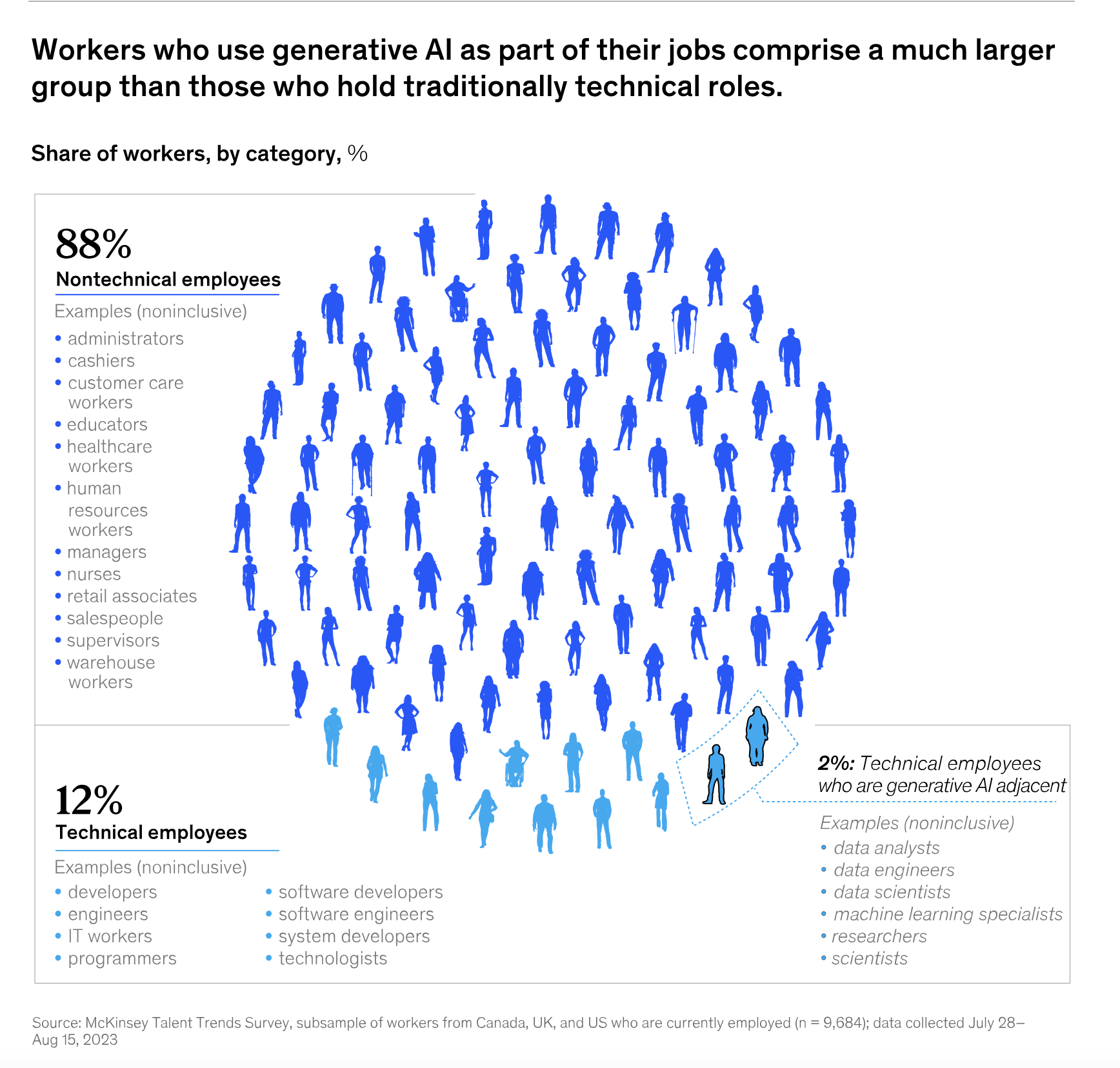
Eye-Opening Insights on Gen AI’s Impact on Workforce Transformation
25 April, 2024
Key Takeaways:
- Generative AI could automate up to 30% of business activities by 2030, adding $2.6-$4.4 trillion annually to the global economy.
- The top use cases for Gen AI are in customer operations, marketing/sales, software engineering, and R&D.
- 88% of Gen AI "talent" are in non-technical roles, using the tech to boost productivity.
- 51% of Gen AI creators and heavy users plan to quit their jobs in the next 3-6 months, citing flexibility and meaningful work over pay.
- Companies plan to build Gen AI capabilities internally through upskilling, rather than external hiring.
The rise of generative AI is ushering in a seismic shift in the workplace. Research suggests this transformative technology could automate up to 30% of business activities across occupations by 2030. To put that in perspective, that's the equivalent of adding $2.6 to $4.4 trillion annually to the global economy - more than the entire GDP of the United Kingdom in 2021!
So where are companies seeing the biggest impact?
The top use cases for Gen AI fall into four key areas: customer operations, marketing and sales, software engineering, and R&D. From chatbots that interact with customers, to AI-generated content and code, the applications are wide-ranging and rapidly evolving.

But the real story lies in the makeup of the Gen AI "talent pool." Contrary to popular belief, only 12% of Gen AI users are traditional technical roles like data scientists and engineers. The vast majority - 88% - are in non-technical jobs, using the technology to boost their everyday productivity and capabilities.
This shift is having a profound effect on the workforce. In fact, 51% of Gen AI creators and heavy users plan to quit their jobs in the next 3-6 months. What's driving this exodus? It's not about the money. This in-demand cohort cites flexibility, meaningful work, caring leaders, and work-life balance as their top priorities - not compensation.
So how are companies responding?
Most plan to build their Gen AI capabilities internally, through upskilling and retraining existing talent, rather than external hiring. After all, generative AI can substantially boost productivity, but it will require significant investments in reskilling and adapting core business processes.
The road ahead is both exciting and daunting. Leaders in business and society must act quickly to determine the new skills and capabilities the workforce will need. It's a transformation that will require bold vision, strategic investment, and a deep understanding of the human factor. But get it right, and the potential payoff is truly staggering.